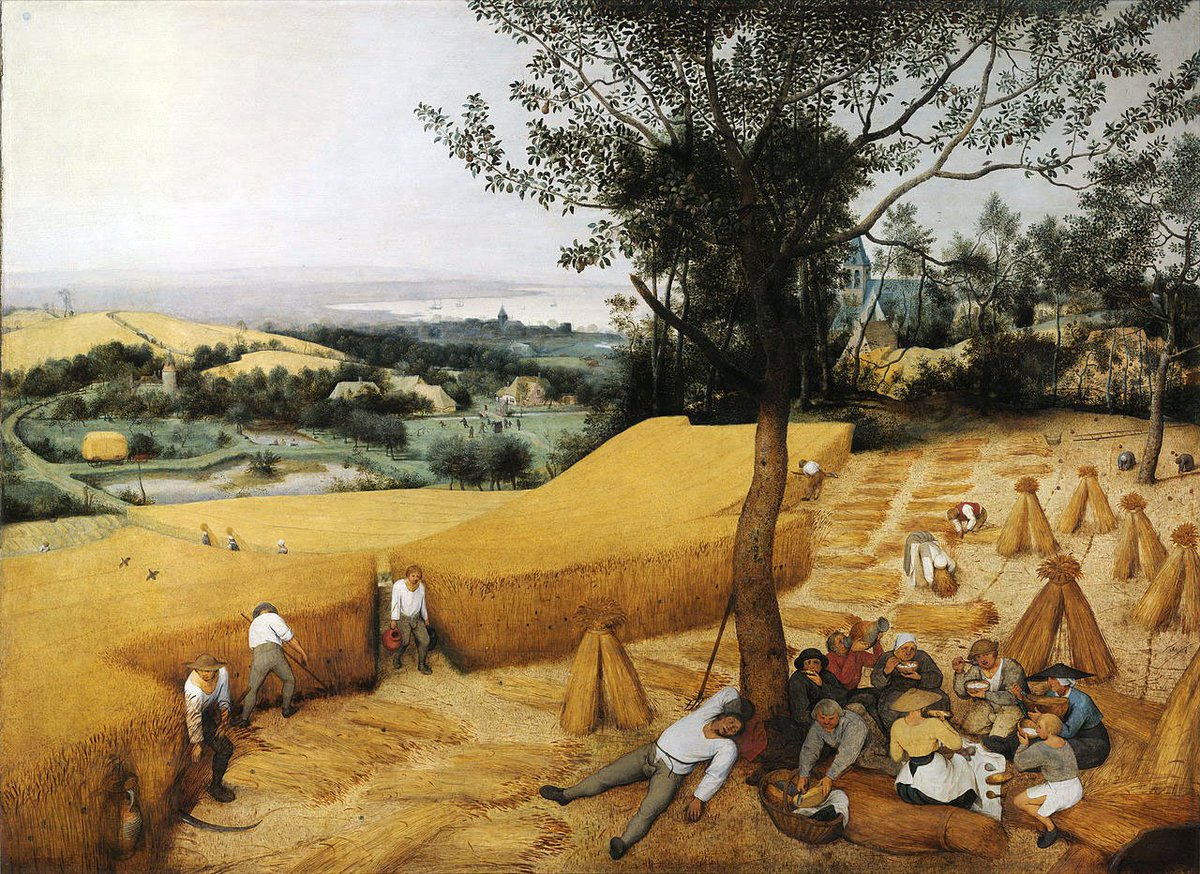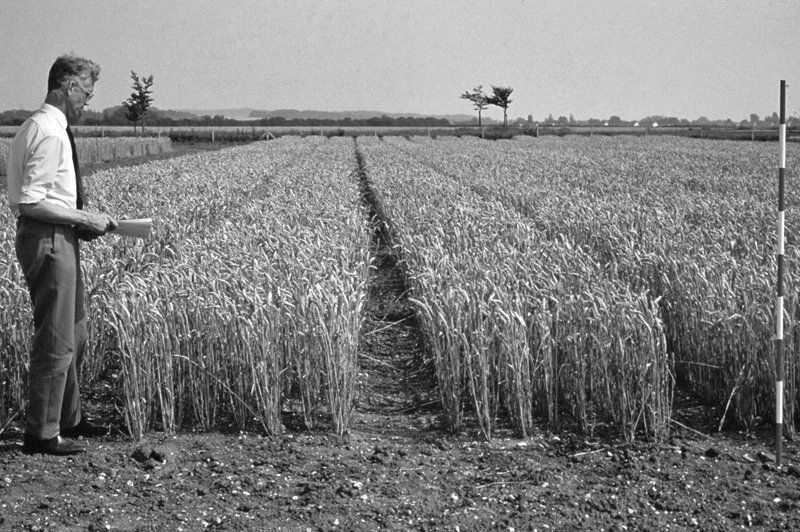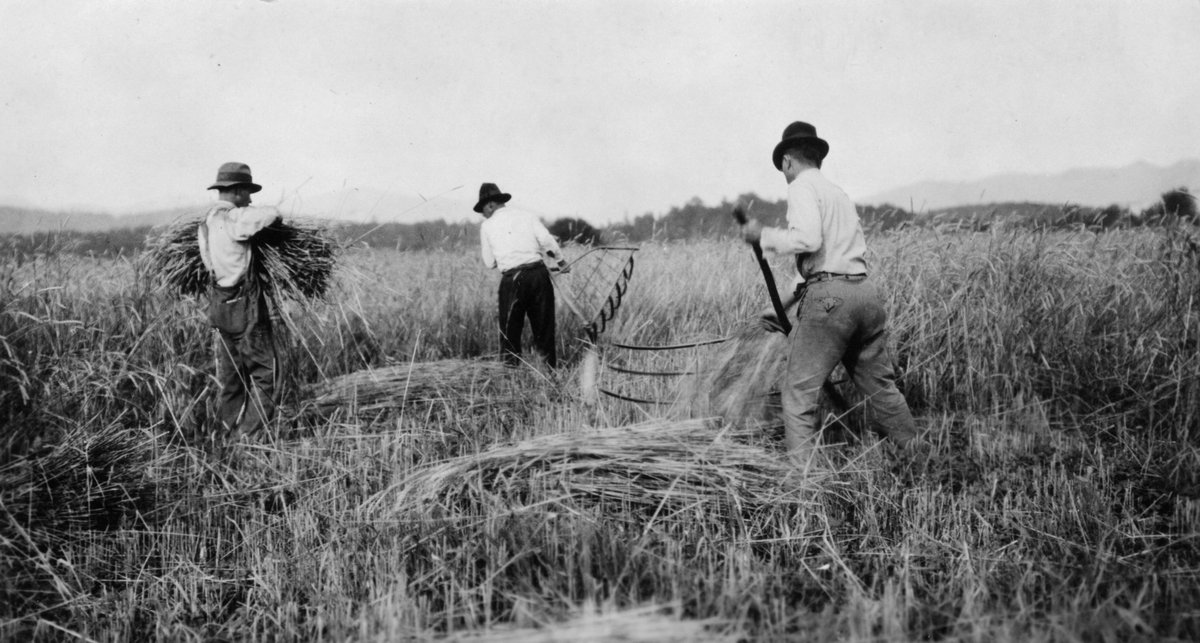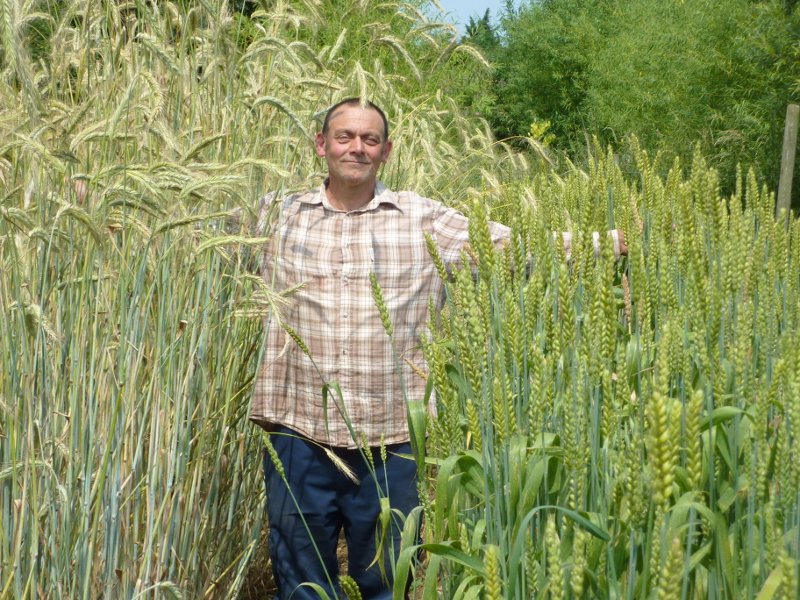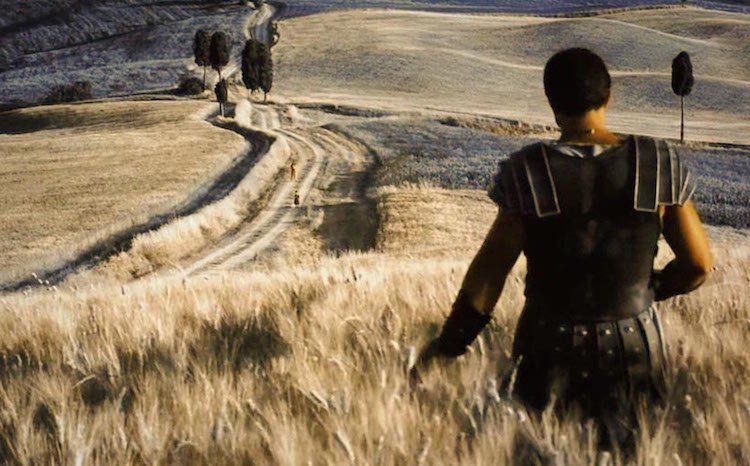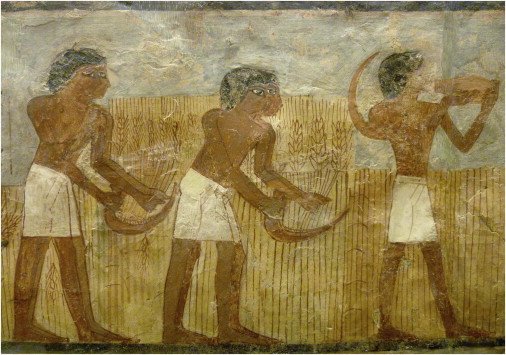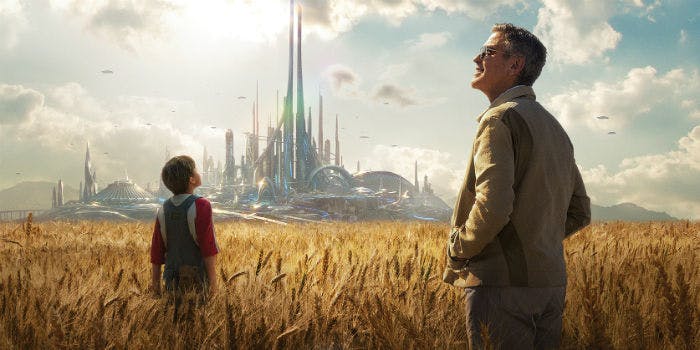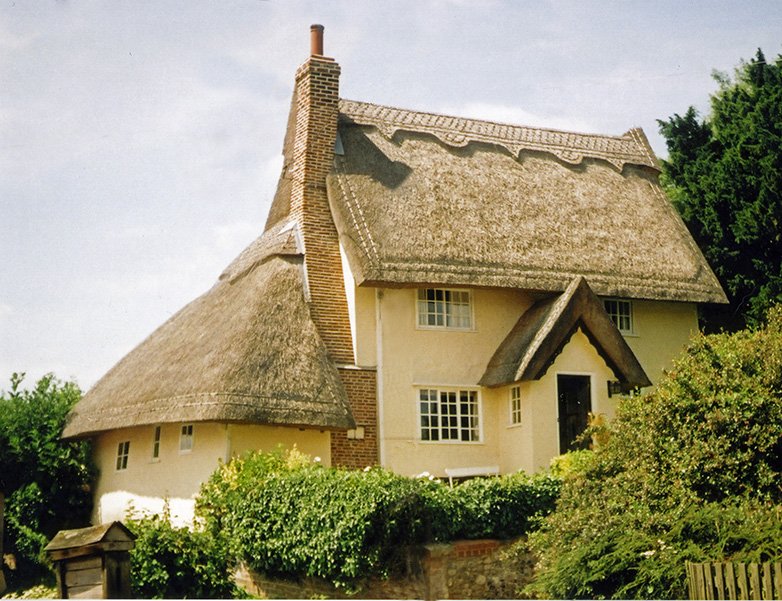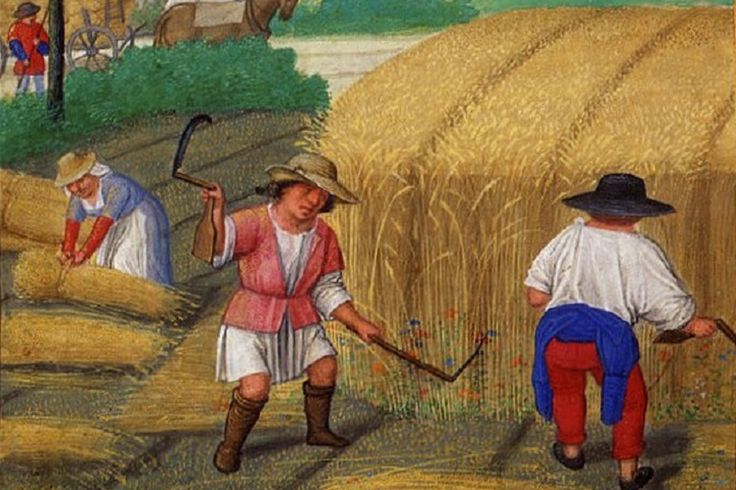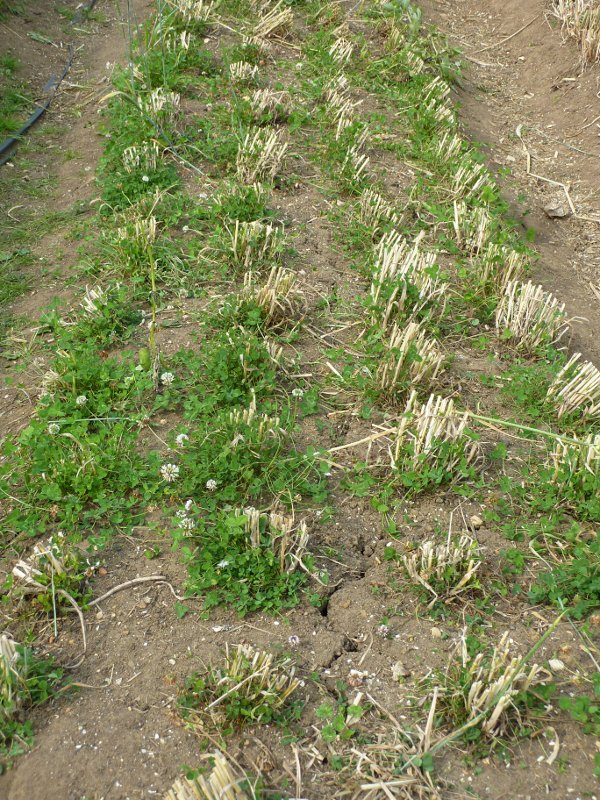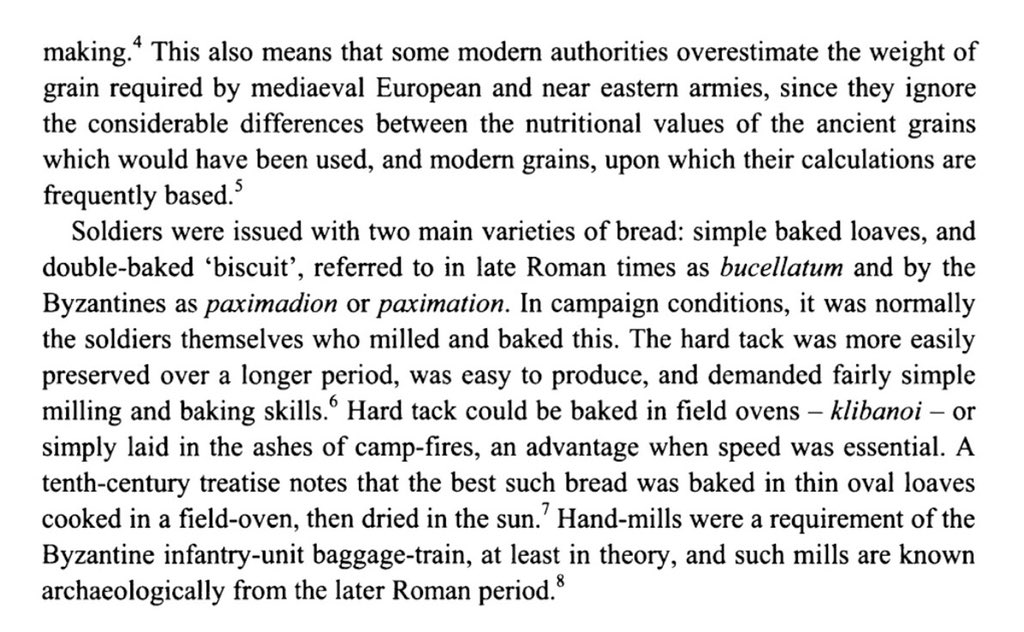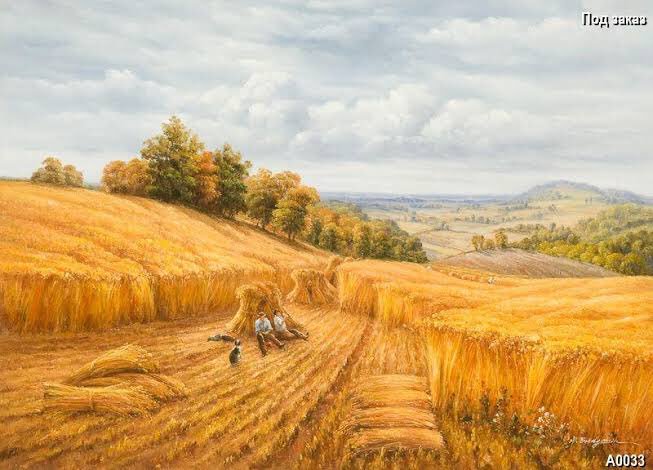Last night I watched some historic rural costume drama and I noticed how ridiculously bad the grain fields were portrayed. All these multi million dollar productions and they can& #39;t even get the wheat field scene right. Let& #39;s look at what wheat (grain) fields really looked like.
Modern grain crops are absolutely nothing like those our ancestors farmed and used for food, feed and building. Slow steady evolution and breeding produced grain that was rich in nutrients with stalks optimized for harvesting for building by hand. Around 1960 all this changed.
Revolutionary new dwarf varieties were introduced, shorter in length (there goes its use in construction) that gave bigger yields but were far less nutritious (great for businesses terrible for consumers). See how straight/short the modern is compared to the tall bending of old.
Until the the dwarf breeds were introduced, wheat would grow to about 1.5m, enough to cover most children & many women. Rye would grow even taller, 1.8m. Here& #39;s a tall smallholder in Linconshire, England, with rye on his left and spelt on his right (a premodern variety of wheat).
Compare with these famous wheat field scenes in two Hollywood blockbusters, Gladiator and 300. The wheat barely reaches half the way up his thigh, nor does it even begin to cover the little boy (his mother is probably kneeling).
That most grain species used to grow much taller can be seen by going back really far, and looking at ancient Egyptian art. At least the futuristic movie on the right gets if correctly, short stems, standing straight, perfect for a robot harvester.
My own relation to grain crops is through roof thatching, for which the stalks of modern wheat is useless. Luckily there are a few commercial growers of thatching wheat and more are returning every year. The grains are excellent for animal feed as well, superbly rich in protein.
If you are interested in small scale home-use grain farming there are two good entry points: 1. The late but legendary Gene Logsdon and his "pancake batch# concept. http://grist.org/article/2009-09-11-logsdon-small-grain-pancake-patch/">https://grist.org/article/2...
2. Buy "The Running Hare" by @JLewisStempel which is the finest modern writing on contrarian grain farming you will ever read. The hardcover book is also a delightful book to read, physically/sensually. https://www.theguardian.com/books/2016/may/01/running-hare-secret-life-of-farmland-john-lewis-stempel-review">https://www.theguardian.com/books/201...
Clever people now ask: But if shorter stems are better for productivity, why did not our ancestors breed these in the first place? And, why do modern wheat breeds give about 4 times more grain than medieval wheat? Well, apart from needing the long stalks for crafts (thatching)...
...our ancestors did not have the option to launch chemical warfare on their fields (and dinner tables). So weeding was an important task: long stalks give less sunlight to the lower growing weeds, smothering them...
...and as for lower yields, they first of all needed less (it was between 1.5-2 as nutritious as modern wheat, which also means they could do with less fertilizers), and they needed to grow less dense to minimize damage to crops from manual weeding.
Here is an interesting and relevant discussion on how Byzantine (and other pre-modern armies) fed their armies in the field. The amount of feed needed has been overestimated due to the higher nutritional value of ancient grains. Feast, Fast or Famine: Food and Drink in Byzantium.

 Read on Twitter
Read on Twitter